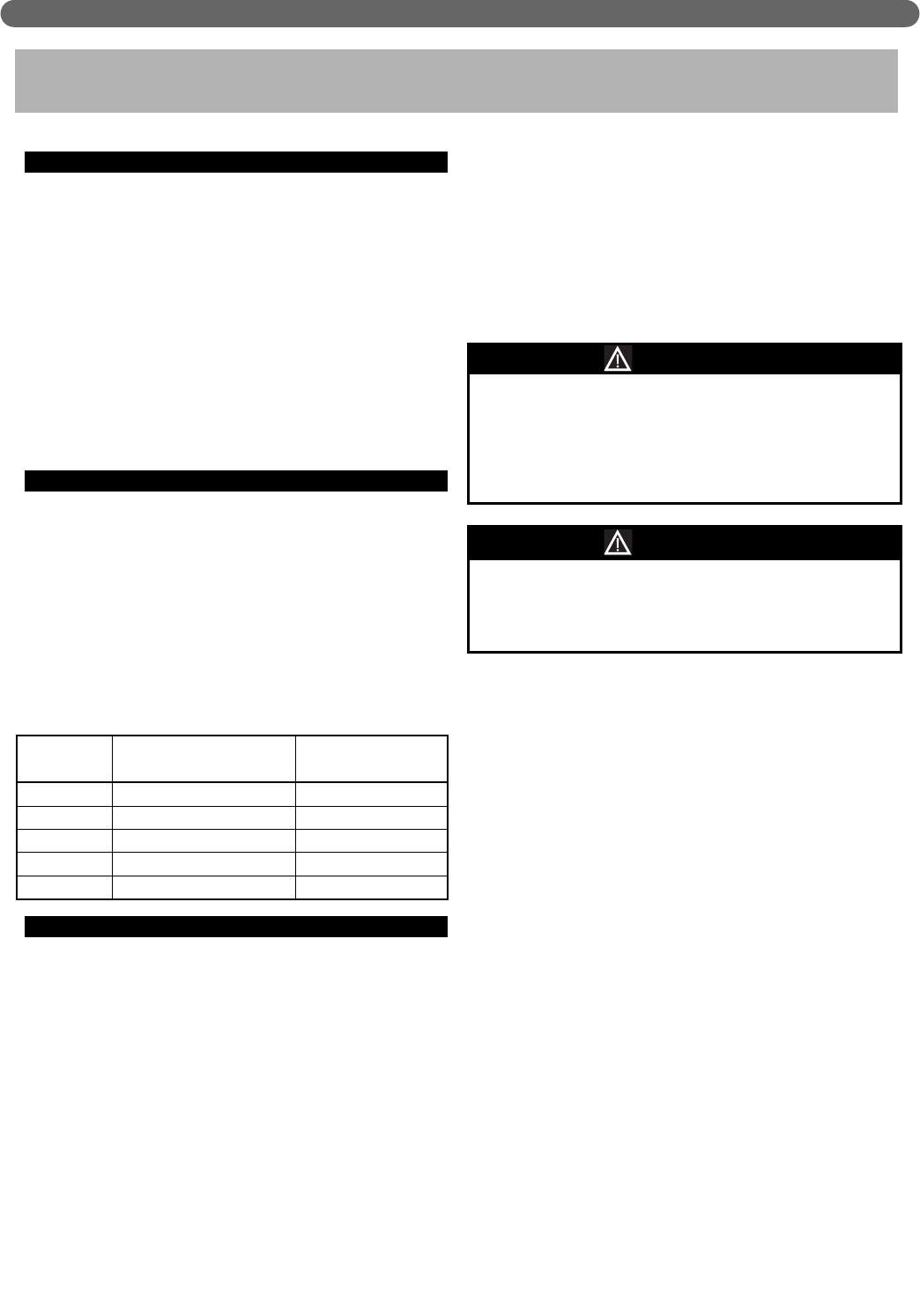A. GENERAL
1. The water supply and return piping of this appliance
are to be sized according to system requirements. Do
not use piping smaller than the boiler connections.
2. In hydronic systems where sediment may exist,
install a strainer device in the boiler return piping to
prevent large particles and pipe scale from entering
the boiler heat exchanger coil. Use a large mesh
screen in the strainer.
3. Install this boiler so that the gas ignition system
components are protected from water (dripping,
spraying, etc.) during appliance operation and
service (circulator replacement, condensate trap
cleaning, control replacement, etc.).
B. OPERATING PARAMETERS
1. The Pinnacle boiler is designed to operate in a closed
loop hydronic system at approximately 15 psi. A
pressure limit in the boiler header will prevent the
unit from operating if the pressure drops below 10
psi. This is to keep the appliance from operating in
the event of a system leak or other condition in which
water is not flowing through the heat exchanger.
2. Table 3.1 shows minimum water flow rates for
Pinnacle boilers. If a glycol solution is to be used,
contact the factory for minimum flow rates.
C. SYSTEM COMPONENTS
1. Figure 3.1 shows the symbol key for piping diagrams
in this section. The following are brief descriptions of
system components.
2. Pressure/Temperature Gauge: A combination
pressure/temperature gauge is provided with each
Pinnacle boiler to be mounted in the piping from the
boiler supply to the system. Most local codes require
this gauge.
3. Air Elimination: Any closed loop hydronic system in
which the Pinnacle boiler is installed must have an
air elimination device. As the system water is heated,
dissolved oxygen and carbon dioxide will separate
from the liquid. An air elimination device (such as a
TACO 430 Series Air Scoop with automatic air vent)
is required to remove the dissolved gasses from the
system preventing corrosion in the piping system and
eliminating system noise.
4. Expansion Tank: An expansion tank (such as a Bell &
Gossett Series HFT) is required to provide room for
expansion of the heating medium (water or glycol
solution). Consult the expansion tank manufacturer's
instructions for specific information regarding
installation. The expansion tank is to be sized for the
required system volume and capacity. In addition, be
sure that the expansion tank is sized based on the
proper heating medium. Glycol solutions may expand
more than water for a similar temperature rise.
5. Y-Type Strainer: In older systems where a significant
amount of sediment may be present, it may be
necessary to install a Y-type strainer. The strainer
should be checked often and cleaned during the first
few months of operation to assure that sediment
does not reach the heat exchanger and clog the
passages. Use a large mesh screen in the strainer.
6. Flow Control Valve: Flow control valves such as the
TACO Flo-Chek or Bell & Gossett Flo-Control™ are
used to prevent gravity circulation by incorporating a
check valve with a weighted disc.
7. Pressure Reducing Valve: A pressure reducing valve,
such as the Bell & Gossett B-38 or a TACO #329, is
used in a hydronic system to automatically feed
water to the system whenever pressure in the system
drops below the pressure setting of the valve. These
valves should not be used on glycol systems unless
close supervision of the glycol solution is practiced.
8. Back Flow Preventer: A back flow preventer (check
valve) is required by some jurisdictions to prevent
the hydronic system water from backing up into the
city water supply. This is especially important on
systems in which glycol solution is used as the
heating medium.
3. WATER PIPING AND CONTROLS
WATER PIPING AND CONTROLS
Table 3.1 – Minimum Flow Rate and Water Volume
Boiler
Model
Total Water
Volume-Gallon (Liter)
Minimum Flow
Rate-GPM (LPM)
PI-T50 0.50 (1.89) 2 (7.6)
PI-T80 0.63 (2.40) 4 (15.2)
PI-80 0.63 (2.40) 4 (15.2)
PI-140 0.93 (3.50) 6 (22.7)
PI-199 1.13 (4.26) 8 (30.3)
Use only inhibited propylene glycol solutions which
are specifically formulated for hydronic systems.
Unlike automotive antifreeze, solutions for hydronic
applications contain corrosion inhibitors that will
protect system components from premature failure
due to corrosion.
CAUTION
Use only inhibited propylene glycol solutions which
are specifically formulated for hydronic systems.
Ethylene glycol is toxic and may cause an
environmental hazard if a leak or spill occurs.
WARNING
5
